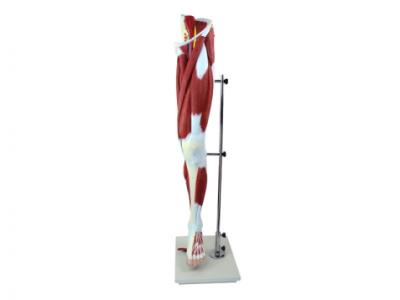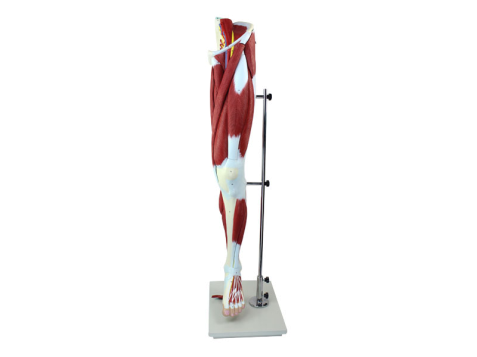ADA MED SUPPLY LIMITED
Phone:+86 19937901373
Tel:+86-0379-65160607
Email:adaanatomy@adaanatomy.com


In the anatomical model of upper limb muscles, muscles are carefully distributed and displayed according to their actual positions and anatomical relationships in the upper limb. Here is a detailed description of the distribution of these muscles in the upper limb muscle anatomy model:
1. Shoulder muscles
The shoulder muscles are located around the shoulder joint, starting at the scapula and collarbone and ending at the upper end of the humerus. These muscles mainly include the deltoid, subscapularis, supraspinatus, infraspinatus, teres minor and teres major. In the model, these muscles clearly show where they start, where they end, and how they are distributed around the shoulder joint. As the largest muscle of the shoulder, the deltoid muscle is triangular in shape and covers the front, back and outside of the shoulder joint, making the shoulder joint have the function of abduction.

Second, the arm muscle
The arm muscles are divided into anterior and posterior groups. The anterior group consists mainly of the biceps, coracobrachialis, and brachialis muscles, which are located in the front of the upper arm and are primarily responsible for elbow flexion. In the model, the long and short heads of the biceps are clearly visible, starting at the scapula and coracoid process, then joining and ending at the radius. The posterior group consists mainly of the triceps, which are located behind the upper arm and are responsible for elbow extension. The long head of the triceps starts at the scapula, while the medial and lateral heads start at the humerus, respectively, and finally the three heads join together and end at the olecranon of the ulna with a tendon.
Third, forearm muscle
The forearm muscles are divided into anterior and posterior groups. The anterior group consists of the superficial brachioradialis, pronator teres, flexor carpi radialis, palmar longus and extensor carpi ulnar, as well as the deep flexor pollicis longus, deep digitalis, and pronator anterior muscles. These muscles are mainly responsible for movements such as wrist flexion, finger flexion and forearm pronation. The posterior group consists of the superficial extensor carpi radialis longus, extensor carpi radialis brevis, extensor digitorum communis, extensor pinkie proprius and extensor ulnar proprius, as well as the deep supinator, extensor pollicis longus, extensor pollicis brevis, extensor pollicis longus and extensor index finger proprius. These muscles are mainly responsible for wrist extension, finger extension and forearm pronation.
Four, the hand muscle
The hand muscles include the lateral group, the middle group and the medial group. The lateral groups are mainly the abductor pollicis brevis, flexor pollicis brevis, contracarpal pollicis and adductor pollicis, which are responsible for abducting, flexor, contracarpal and adductor thumb respectively. The middle groups are the lumbricids, the interosseous palmar muscles, and the interdorsal dorsal muscles, which are mainly responsible for drawing and spreading the fingers together and flexing the metacarpal and knuckle joints. The medial muscles include the abductor of the little finger, the flexor of the little finger short, and the contraparpal of the little finger, which are responsible for abducting and flexing the little finger, flexing the little finger, and contraparpal, respectively.
Through the upper limb muscle anatomy model, we can clearly see the distribution of these muscles in the upper limb, as well as their mutual relationships and anatomical structures. This is very important for understanding the function and movement mechanism of the upper limb, and has important implications for medical education, rehabilitation therapy and fitness training.